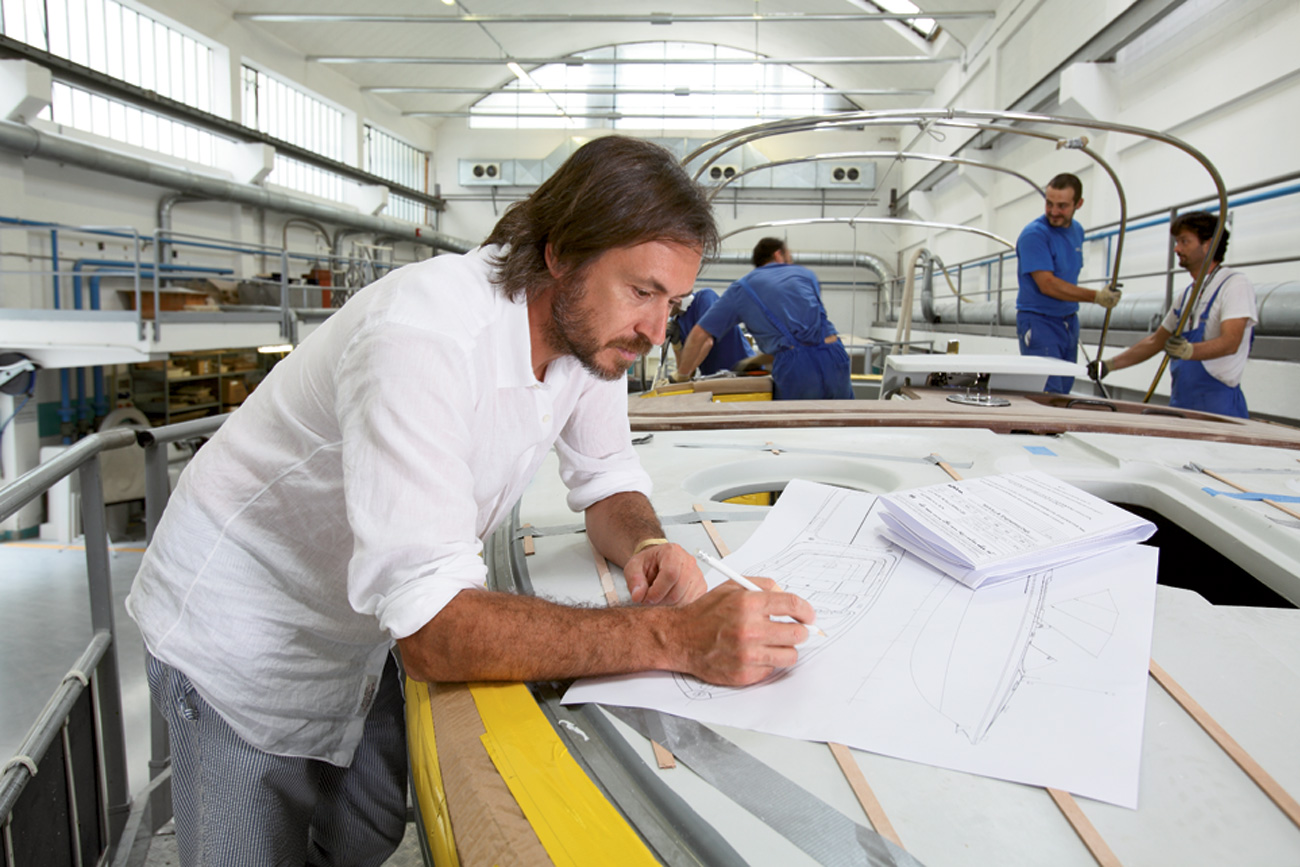Marc Newson Futurism
Architect Adolf Loos wrote that “Beethoven’s symphonies would never have been written by a man who walked around in silk, velvet, and lace” to denounce the extravagance of decorating oneself. But then again, the fantasy of Brigitte Bardot-or any figure worth pinning up from the Rivieras circa the 1950s or 1960s-wouldn’t have been complete without the Riva, the Italian speedboat that Marc Newson calls “to speedboats what Ferrari is to cars: one of the most iconic Italian brands.”
Newson’s limited-edition update of the Riva-Aquariva by Marc Newson, which goes for $1.5 million-is the centerpiece of Transport, his new show of designed planes, suborbital aircraft, and automobiles opening this September at Gagosian Gallery in New York. Nevertheless, Newson found the process of revamping the tabloid-friendly speedboat far from straightforward. “Because it’s such a recognizable brand, you have to maintain a certain silhouette,” says the Australian-born, 46-year-old designer. “You can spot them from 100 yards away, and you can’t change that, because otherwise . . . it’s not a Riva anymore.” Then there are logistical problems, like amenities; the Riva also comes with a dining area, although it’s not for riding and eating at the same time. “I wouldn’t recommend that, no,” say Newson. “Food might just slide off the table.” And there’s a cabin underneath, although, “Anyone who can afford to buy that boat isn’t going to bother sleeping there.”
Recently, Gagosian has given the museum world a shake with big-budget, innovative, and historical programming. Newson’s first show with the gallery, in 2007, included limited-edition objects-shelves, lighting, and furniture-some of it on pedestals, and all of it displayed with a seriousness to belie the velvety history of design display. Transport is organized as a historical survey of Newson’s work. “The fact is that the boat is the only thing that they can sell, so it really is a museum show,” he says.
One of the first of Newson’s pieces to garner wide attention was his Lockheed Lounge (1986), a bulbous aluminum and fiberglass chaise that seemed both as sturdy and as fluid as mercury, and which for some recalled the World War II-era aircraft manufacturer. Newson originally had no name for the piece, but the work itself resonated. The Gagosian show begins chronologically with Newson’s fully functioning concept car, the Ford 021C, made in 1999. “And then I started designing airplanes,” he explains. “You know, a lot of what I do at my company is private aircraft and commercial aircraft. That represents a big chunk of my business.” To futuristic effect: There’s a full mock-up that Newson created for a suborbital aircraft, and even a jet pack he made for a private French company.
A kind of ageless futurism pervades Newson’s designs: They’re always curving, both endless and voluptuous. The colors are often wonky and outdated but never referential or postmodern. For the Aquariva, Newson even used a laminate that’s a mix of linen and resin. “It’s an ancient material,” he says. “It has been used in this way, as an early version of fiberglass for about 100 years.”
But the real age-old problem that Newson confronted is how much function people will stomach when they’re considering a work of art in a gallery. “I’d say 70 percent of what we do, what I do, is engineering, you know?” he says. “The design part of it is small-it’s about connecting the dots.” He adds: “You can’t sketch a boat on a napkin. It’s a serious product that people will drive around in-you know, risk their lives in.”







